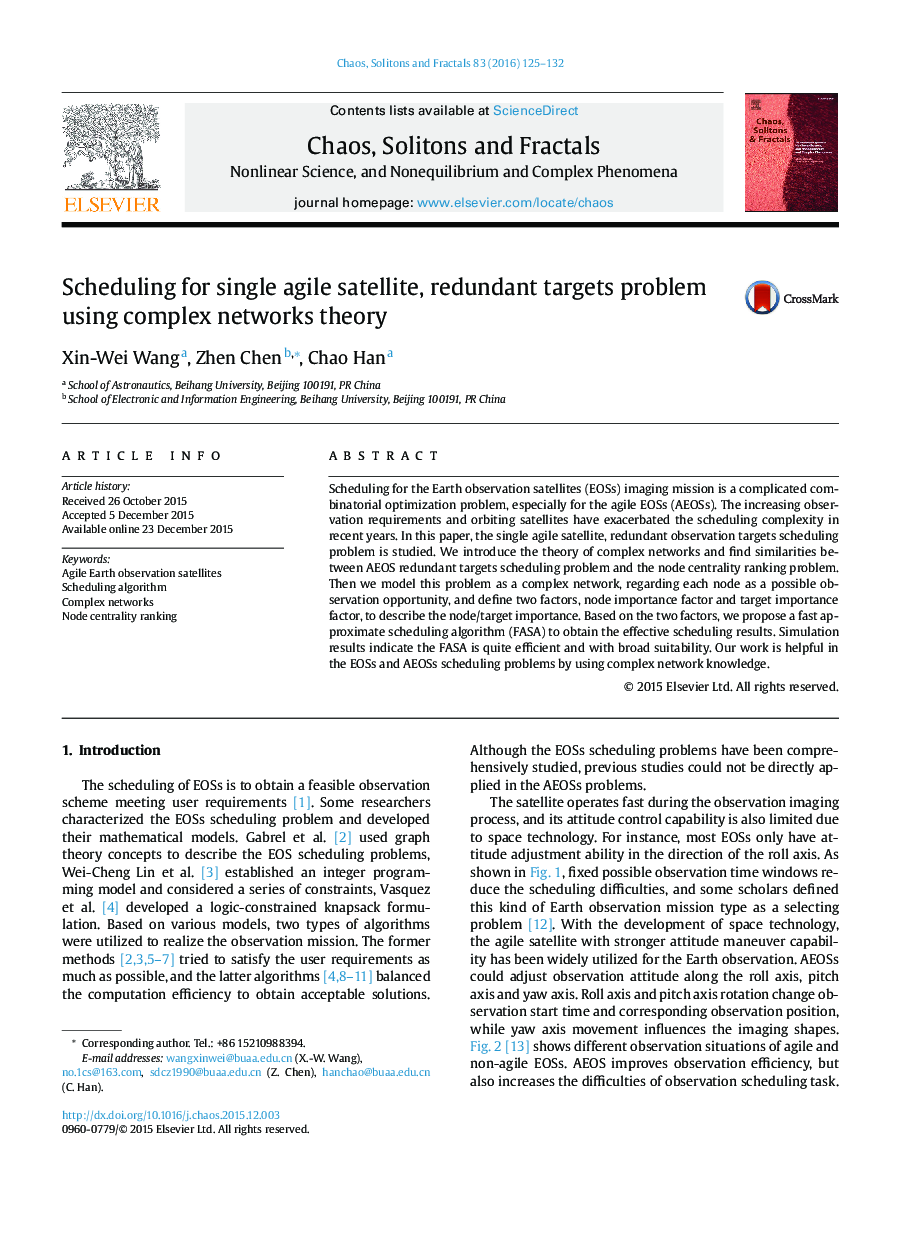| Article ID | Journal | Published Year | Pages | File Type |
|---|---|---|---|---|
| 1888824 | Chaos, Solitons & Fractals | 2016 | 8 Pages |
•The model is established based on the graph theory and complex network theory.•We find similarities between the scheduling problem and the node ranking problem.•The scheduling algorithm proposed is quite efficient and with broad suitability.
Scheduling for the Earth observation satellites (EOSs) imaging mission is a complicated combinatorial optimization problem, especially for the agile EOSs (AEOSs). The increasing observation requirements and orbiting satellites have exacerbated the scheduling complexity in recent years. In this paper, the single agile satellite, redundant observation targets scheduling problem is studied. We introduce the theory of complex networks and find similarities between AEOS redundant targets scheduling problem and the node centrality ranking problem. Then we model this problem as a complex network, regarding each node as a possible observation opportunity, and define two factors, node importance factor and target importance factor, to describe the node/target importance. Based on the two factors, we propose a fast approximate scheduling algorithm (FASA) to obtain the effective scheduling results. Simulation results indicate the FASA is quite efficient and with broad suitability. Our work is helpful in the EOSs and AEOSs scheduling problems by using complex network knowledge.
